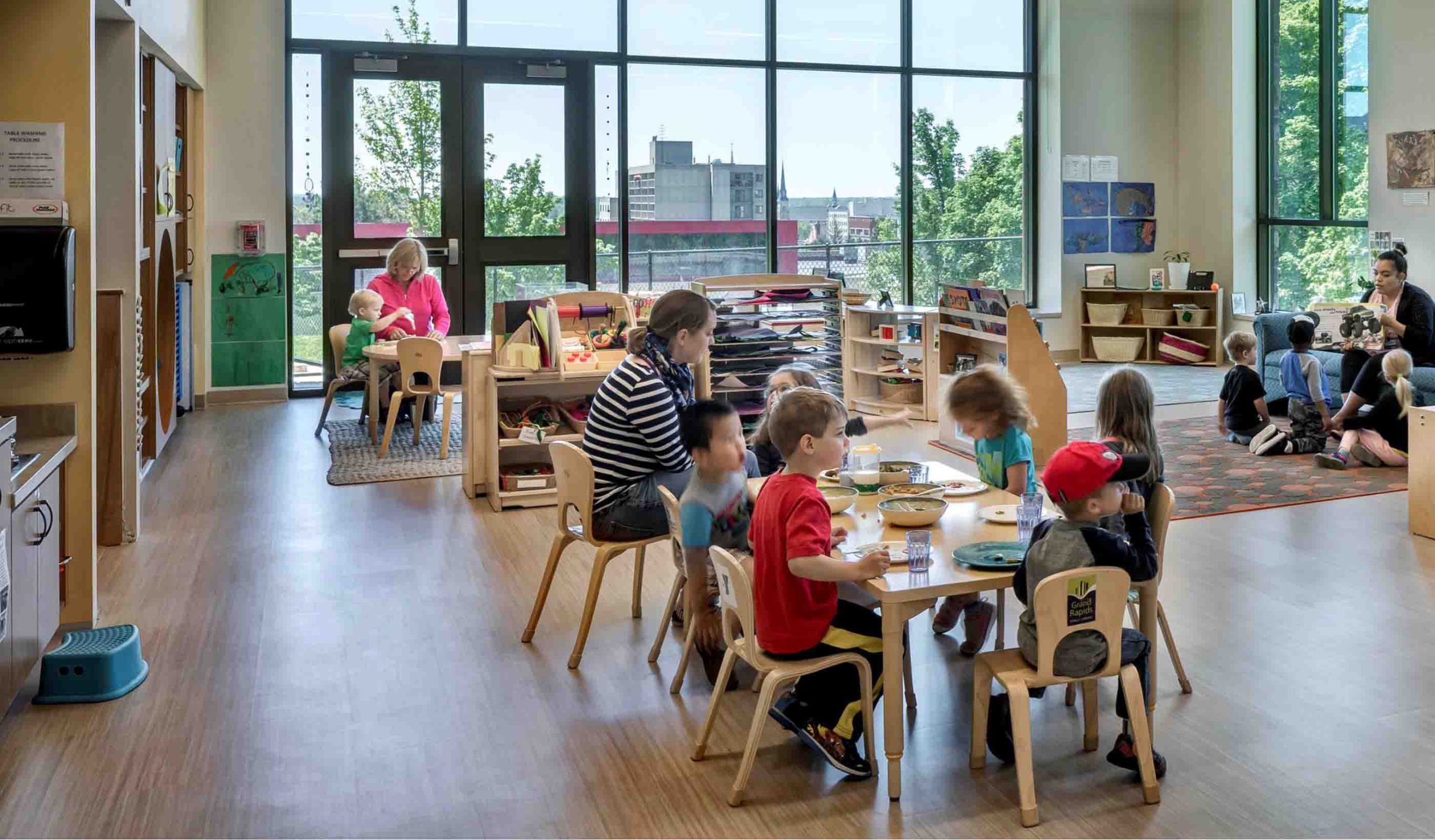The value of kindergarten interior design is indisputable in the always-changing field of early education. The environments where children learn significantly affect their growth as we want to develop young brains and encourage creativity. Now establishing the benchmark for educational settings are creative kindergarten interior design, which combine beauty with utility to provide areas that inspire and involve. This post explores the newest ideas and trends in kindergarten design, highlighting how well-considered interiors could change the learning environment for our youngest students.
Designing Interesting Learning environments
Modern kindergarten interior design mostly aims to provide interesting and motivating learning environments. These settings are meant to inspire youngsters’ creativity and promote active involvement. The strategic use of vivid colours, whimsical patterns, and interactive components helps to create dynamic and appealing classrooms.
Including open areas and natural light is yet another important trend. Apart from improving visual attractiveness, large windows and skylights link with the outside, promoting freedom and openness. Moveable chairs and tables, among other flexible seating options, let dynamic learning configurations—which may be quickly changed to fit various activities and group sizes—exist.
Promoting Comfort and Safety
In kindergarten interior design, comfort and safety take the front stage. To reduce the danger of damage, the newest designs give soft furniture and softened edges priority. Hypoallergenic coatings and non-toxic products guarantee that the surroundings are safe for every kid, especially susceptible ones.

Young children’s sizes and requirements call for comfortable and ergonomic furniture specifically. Tables and chairs are meant to assist good posture and mobility, therefore enabling youngsters to concentrate and participate in their activities free from pain. Rest spots and comfortable reading nooks also provide kids with places to unwind so they may rejuvenate and be ready for additional study.
Discovery and Innovation
Kindergarten classrooms are starting to be built to inspire inquiry and invention. Interactive walls, sensory play spaces, and themed sections help to create creative worlds out of conventional classrooms. One may create a space-themed area with stars and planets hanging from the ceiling or a little jungle with soft animals and plants out of a corner of the room.
Art stations furnished with different materials inspire creative inquiry and self-expression. These places are meant to be conveniently accessible so kids can choose their creative hobbies without constraint. By giving youngsters fresh and interesting ways to interact with instructional materials, technology—including interactive whiteboards and tablets—helps to improve the learning process.
Environmental and Sustainable Designs
The kindergarten interior design is increasingly oriented toward sustainability. Greener learning surroundings are being created by using energy-efficient technology and environmentally friendly materials. Low-VOC paints, recycled materials, and sustainable furniture choices help these areas to have less carbon impact.
By design that is not only safe and pleasant but also exciting and inspirational, innovative kindergarten interior design is transforming early education. Modern designs are redefining educational surroundings by including interesting learning areas, pushing safety and comfort, supporting creativity, and embracing sustainability. Kindergarten education seems to be brighter than ever as we keep investigating and using these ideas. The experiences and growth of young children are greatly shaped by kindergarten interior design, therefore guaranteeing the best potential beginning in their educational path.


